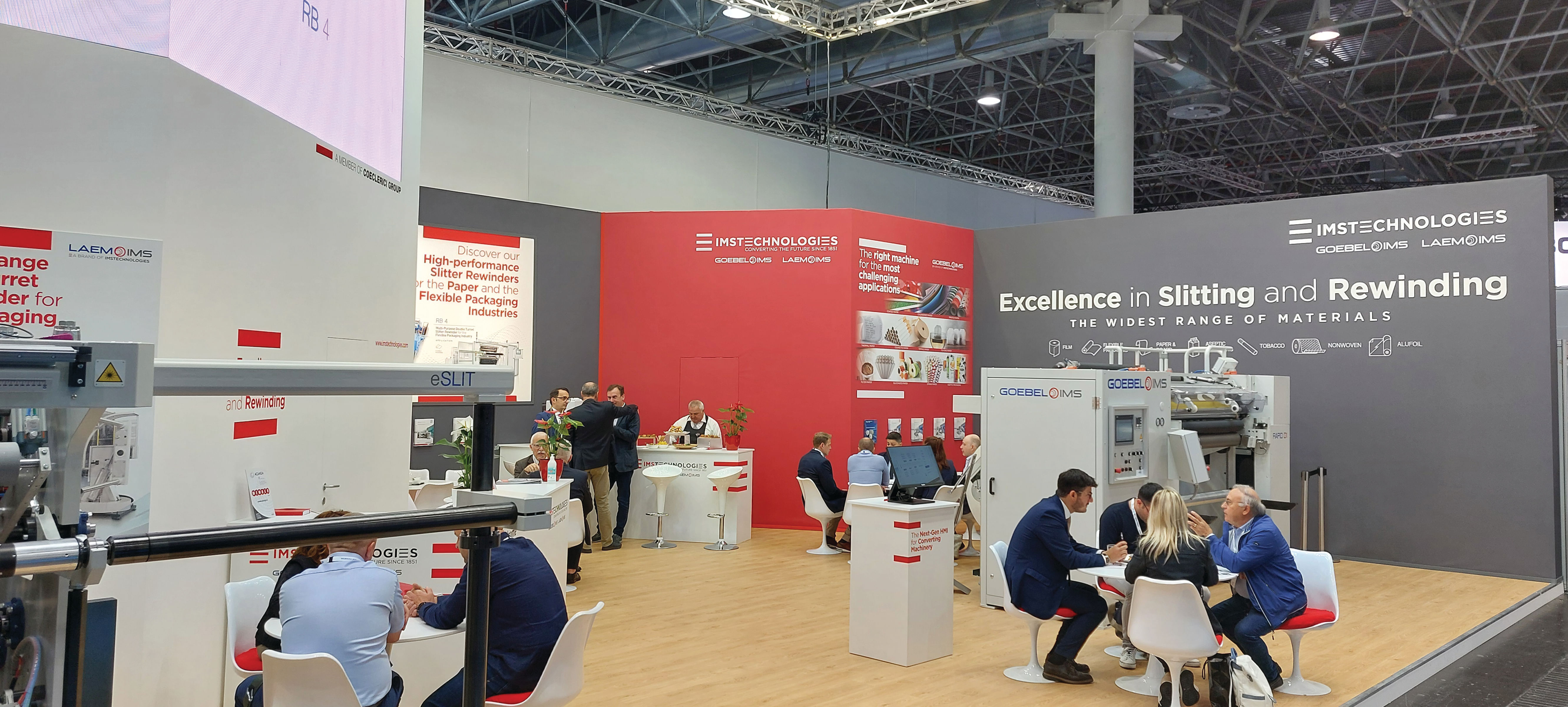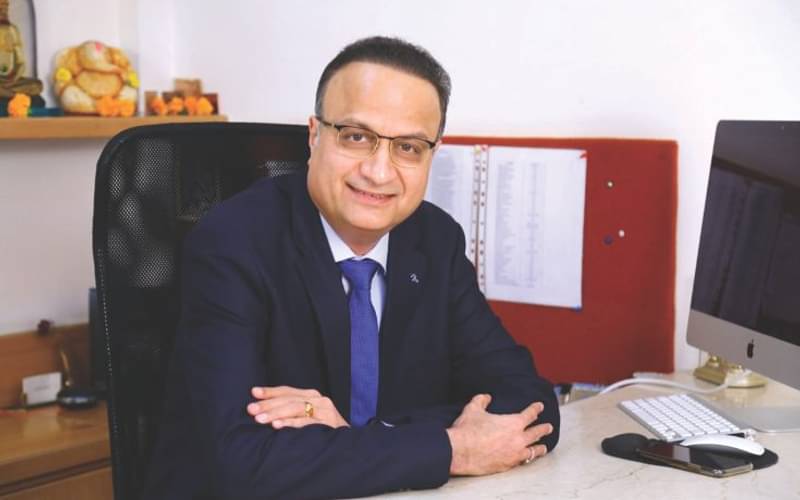Recyclable laminates and the PE-PE pouch to raise the packaging bar
“The Indian packaging market is dominated by polyethylene. Even during the pandemic, the barrier film and sheet market ramped up significantly,” says Manish Mehta, managing director of Reifenhauser (India) in a conversation with Abhay Avadhani
05 Sep 2024 | By Abhay Avadhani
Abhay Avadhani (AA): How does flexo perform with biaxially-oriented polypropylene (BOPP), biaxially oriented polyethylene terephthalate (BOPET), polyethylene (PE), cast polypropylene, polypropylene, polyamide, ethylene vinyl alcohol, polyvinyl chloride and polystyrene?
Manish Mehta (MM): Flexo is mainly used for reverse printing of BOPP, BOPET and surface printing of PE. It is also used for polyvinyl chloride (PVC) or polyester films for shrink sleeves on reverse printing. Polystyrene and cast polypropylene (CPP) so far, are not actively used for printing.
AA: What should we be watching? What has your experience been with your Indian users?
MM: The future would be where pollution and recyclability are addressed from the perspective of the market and society. One should watch electron beam-cured ink, water-based ink and digital printing, and create a niche market for conventional packaging with security, anti-counterfeit and some special additives made of film like frost film, anti and fog film.
AA: What has your experience with gravure been so far?
MM: For gravure, we work with Pelican who have been dominating the Indian gravure market with its quality and after-sale service.
Pelican presses ensures we do not lag behind international standards in terms of machine safety, sales service, productivity, power consumption, and efficiency. The company has officially acquired technical knowhow from Cerutti and enhanced the technology from an Indian perspective. Understanding the need, it gained the premium market share.
AA: What sort of conversations are you having with customers about lightweighting?
MM: In terms of lightweighting, 8-micron polyester and 12-15- micron BOPP are commonly used. Biaxially-oriented polyamide (BOPA) and PVC films are taking the forefront for their respective applications and both have challenges that we need to watch out for.
AA: How easy is it to create a process-oriented approach in gravure in terms of increasing your customers’ productivity?
MM: A printing company has its own challenges, since it contains various other processes such as full converting with lamination, extrusion lamination, slitting and pouching. Today, integrated softwares are available for our production line controls (PLC) to improve productivity, reduce wastage and changeover time. An area to work on is the workflow. ERP/CRM systems, which can give a big boost to productivity, overall plant efficiency, andservice to brand owners.
AA: How does your company respond to the pressures of both the global and regional logistics markets?
MM: Handling competition is a way of life — it's not a pressure, but a pleasure. We keep evolving to face the far east as well as European competition. We put ourselves in the middle, geographically as well as in terms of technical challenges, besides having a big team of technicians and engineers for prompt after sales service is a very big plus.

IMS Technologies stand at Drupa
AA: How do you respond to product cycles and shorter runs?
MM: We respond by upgrading our technology in terms of power consumption, web path reduction, changeover time, ink and solvent conservation, recirculation of air and collection of solvent for recycling. On the other side, we bring automation, starting with register control to servo driven technology and gadgets like electro static assistance, web break detector, low inertia rollers, and air dryer design. The right training in pre-press and meticulous preparation also helps reduce setup times and wastage.
AA: We hear that run lengths have reduced and brands want multi-product portfolios with quick changes. In what way?
MM: We keep on upgrading step-by-step to the latest innovation in different areas for process control and process automation. The shorter run can be addressed with narrow-web and dedicated short-run design with gravure.
For fast delivery, medium-web width and standard unwind-rewind instead of turret unwind/rewind in flexo and even in-line flexo and digital are booming.
AA: What about PE-PE laminates?
MM: PE-PE is an old story. We have sold extrusion machines with machine-direction orientation (MDO), printed on flexo and gravure, and now we are trying on digital.
We have produced lamination and pouching without any hazards. The bottlenecks are the cost of the raw material, the PE resin plus overall costs of this film, which brand owners are apprehensive to pay. Till these costs are rationalised and brand owners are forced to accept the government law, this looks like a far fetched challenge.
AA: What do your numbers for Indian flexible packaging say? Which substrates dominate and why?
MM: There are many substrates dominating the market like PE, BOPP, CPP, and BOPET with heat sealable properties and barrier papers. Especially with barrier coatings, we need to see who takes the wheel based on applications, climatic conditions, properties required for specific packaging and the cost of sustainable solutions.
AA: Should amorphous polyethylene terephthalate (APET) and polylactic acid (PLA) be added to this list? As well as alox metallising?
MM: Alox metallising (transparent metallising) is a way of life and India has a multitude of such machines. These are widely used and exported. PLA is mainly used for paper coating, for preparations like paper cups instead of PE. Major breakthroughs will be if the United States Food & Drug Administration (FDA) or the Indian government issue any regulations. APET will take over PVC in blisters and pharma.
AA: Even though designs are developed keeping gravure in mind, it is difficult to match an existing printed sample. How do we resolve this?
MM: For cartons and paper printing, gravure and offset are conventional, and widely accepted methods. Anything that needs to be changed, initially, faces resistance and infrastructure issues. Especially in the last decade, I have seen that pre-press and plate producers, and digital flexo have come a long way to match these challenges. Traditional gravure has its own advantages and challenges.
AA: What to look out for?
MM: The key here is how the gravure and flexo players will position themselves. So far, gravure with water-based is still not prevalent as compared to flexo with a solvent and water-based setup. Electron beam (EB) will take centre stage in the next 12 to 18 months, with the decrease in cost, since many ink manufacturers are taking this up.
AA: Have you spotted any innovations in gravure applications in India that inspired you?
MM: The biggest inspiration is laser engraving which is doing a marvellous job in comparison to the conventional method. There are minor improvements in softwares from pre-press and machine design for less ink consumption, better productivity and efficiency. Now, a speed of more than 400 mts/min is easily achievable.
AA: What is the sustainability quotient for gravure? What are the challenges; and how does gravure compare?
MM: In terms of inks, gravure has to focus on water-based which is of prime importance from a sustainability perspective. Toluene-free is a way of life now and most converters and brand owners are demanding this. Gravure has responded well in this respect.
AA: One “wow” project that you have in India?
MM: In India, we sold a dedicated flexo machine with EB ink and EB coating on all stations. The machine has been running well for the last two years and has a good demand. Although it is limited in India due to the cost, it is doing great internationally. The second “wow” project is, MOPE - manufacturing, printing, and the making of a PE-PE pouch.
AA: One prediction for 2024?
MM: Recyclable laminates, pollution-free inks (water-based and EB), digital printing, and a PE-PE pouch will be pivotal.
Drupa 2024 - IMS Technologies

Rapid D1 slitter rewinder by Goebel IMS
Your star product at Drupa?
The Rapid D1 slitter rewinder by Goebel IMS — a brand of IMS Technologies.
When was it launched?
It has been Goebel IMS’ bestseller for decades. More than 2,500 machines have already been installed for very different applications all over the world. It can process a wide variety of materials such as standard and special papers, board, cigarette paper and packaging materials.
What does it do?
The Rapid D1 is a high-precision slitting and winding machine with a wide range of materials. This slitter rewinder guarantees perfect roll separation even with extremely narrow slits (down to 5-mm).
Technical specifications of the product
Working width: Up to 2,000-mm
Unwind diameter: Up to 1,500-mm
Rewind diameter: Up to 1,000-mm
Speed: Up to 1,000-m/min
Minimum slitting width: 5-mm
Wide range of paper and board grades from 10 to 350gsm
What are the highlights of the product?
The Rapid D1 ensures high productivity, flexibility, and perfect slitting and rewinding quality, even for the narrow finished rolls. It also has ergonomics, low maintenance and has a compact design. It can be customised with accessories, including separate unwinder and automatic finished reels. This layout allows quick changeovers and fast format changes reducing the machine downtime. The new Rapid D1 features an improved contact pressure control to set and monitor the hardness of the finished reels.
Explain how it helps your Indian customers do their job in a better way.
The Rapid D1 is the solution for all the converters that have to process demanding materials for special applications. In India we are placed well, especially in the tobacco industry for cigarettes and tipping paper. The machine can use specialty papers like tea bags and straw papers, sensitive paper, siliconised paper and special materials.
Any Drupa announcements; any Indian deals?
During Drupa, we had a lot of visitors from India in terms of current and potential customers. We arranged meetings for different applications as our portfolio for the paper and board industry ranges from primary to converting machines: slitter rewinders, two-drum winders, automatic reelers, inspection machines and handling systems with different levels of automation.
Reifenhauser India Marketing represents the Goebel IMS in the Indian market.


